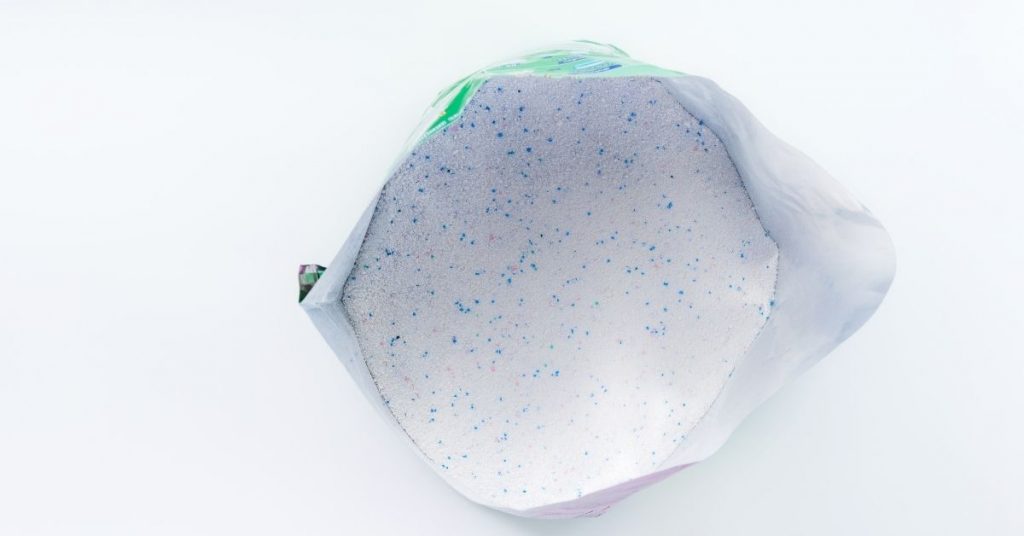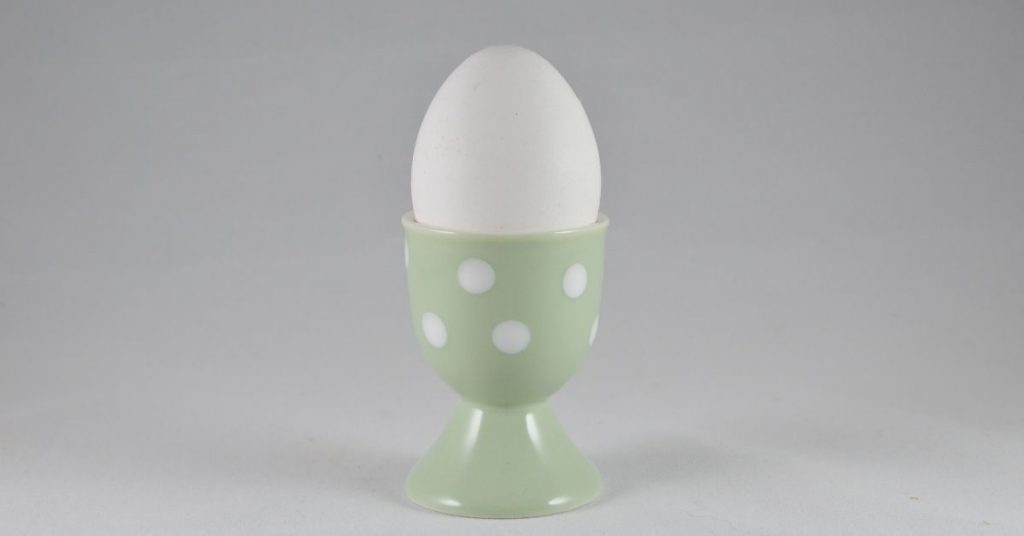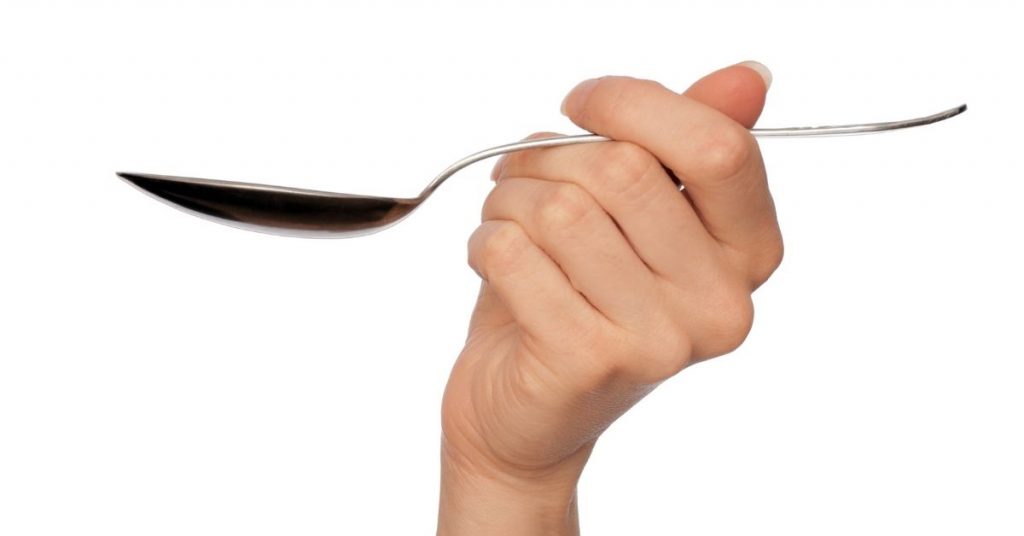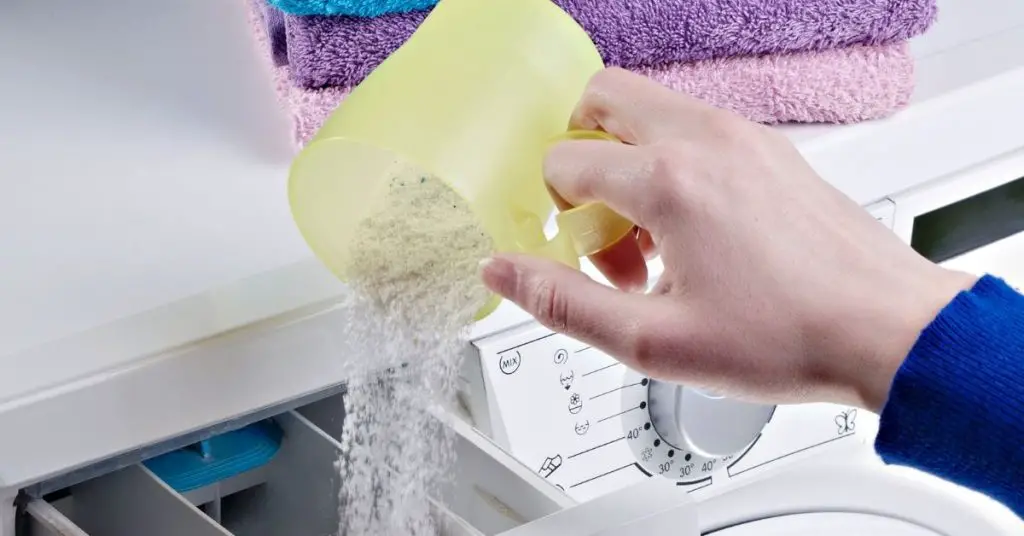Measuring Washing Powder Without A Scoop: Top Tips
In efforts to reduce plastic waste across the UK, most laundry companies are no longer providing a scoop with their washing powders.
Although we do appreciate their efforts to cut down on single-use plastics, it does make using washing powders for the first time slightly difficult.
Using too much washing powder can lead to a white, powdery residue being left on the clothes.
But not using enough powder detergent will leave clothes stained and stinking.
However, as long as you use roughly the right amount of washing powder, the results will generally be fine.
We actually suggest reducing the amount of powder detergent until you find the minimum amount that works for your washing.
Producers of washing powder will want you to buy their product frequently, so they will probably suggest more than you actually need to get your clothes clean.
Try cutting back on detergent until you reach a point your happy with, to save money on laundry and reduce environmental impact.
In this post, we’ll cover how to measure washing powder without a scoop, the best alternatives to a laundry measuring scoop, and we’ll also talk about how much washing powder is actually required for most washes.
How to Measure Laundry Powder Without a Scoop
The following methods are ways of measuring out your powder detergent without any form of scooping device.
However, manufacturers’ guidance won’t apply to every wash you do, so it’s worth adjusting the quantity of detergent depending on the factors listed under the heading ‘How Much Washing Powder Do You Really Need?’ further in this post.
Similarly, a laundry scoop size used to vary from product to product, so there wasn’t ever one universal standard.
We also suggest reducing the quantity of washing detergent from the manufacturer’s stated dosage until you’re happy with the cleanliness, fragrance, and softness of your clothes.
This is a great way of making a bag of washing powder last longer, and reducing the household bill for laundry.

Use the Drawer Marker
Most washing machines will have an in-built line inside the detergent drawer which shows you how much powder detergent to use.
Weigh it Out in Grams
Alternatively, check the suggested ml of washing powder on the packet, and weigh this out in grams.
Generally, the ml of suggested washing powder will work out as the same number in grams, so weighing should give you the right dose.
Wing It
Another option is to just wing it, as a variation of a couple of grams isn’t going to noticeably affect the quality of the clean.
Once you’ve had your washing machine for a while you get used to how much washing machine does the job well.
Buy a Scoop
This affordable little scoop is designed for coffee but works brilliantly for measuring out 30ml of washing powder.
One reviewer said:
“I bought this scoop as a spoon for my laundry powder. Happy to say it is sturdy and the perfect size to dispense detergent – this will definitely last for a long time.”
If you’re enjoying this article, check out our recommendations for The Best Natural Washing Powder In The UK.
Best Alternatives to a Laundry Measuring Scoop
If your machine doesn’t have a line to show where to pour washing powder, then get creative with some of the following suggestions.
Protein Powder Scoop
Protein powder scoops normally fit around 25g to 30g, which is a pretty standard dose for powder washing detergents.
If you have an old protein powder scoop lying around, give it a rinse and ta-da! – you have a brand new laundry detergent scoop.
Egg Cup
Since eggs aren’t typically measured in ml, there isn’t a standard measurement for an egg cup.

However, it’s a small amount probably quite similar to the amount of washing powder required.
Plus, it’s great for scooping.
This isn’t the best idea we’ve ever had, but it’ll do the job in a needs-must situation.
Tablespoon
A tablespoon is equal to 15ml, which is about half of the usual 30ml of powder detergent required for an average washing machine cycle.

Using two tablespoons of washing powder will give you roughly 30g of washing powder, and you can easily add or takeaway spoonfuls depending on the factors listed below.
How Much Washing Powder Do You Really Need?
Unfortunately, there isn’t a simple answer to how much washing powder to use because there are a number of factors that affect this number.
The best way of deciding how much washing powder you need is to start from the stated detergent scoop size from the manufacturer, and adjust depending on washing machine capacity, load size, soiling level and water hardness.
However, these increases and decreases would be very slight amounts, so it’s up to you whether it’s worth the extra effort.
When deciding how much washing machine powder to use, consider the following four points:
1. Washing machine capacity
One of the main considerations should be the capacity of the washing machine.
A 4-5kg machine will require a lot less powder or detergent than a mega 9kg machine.
You can adjust the amount of powder accordingly or follow the handy guide from Ariel.

2. How full the washing machine is
There’s no point filling a 9kg washing machine with a full dose of washing powder if it’s only half full.
Take a look at how much you’re putting inside the machine and adjust the dosage accordingly.
However, if the things in the washing machine are particularly dirty then the quantity of laundry shouldn’t affect the dosage – and you should use the stated dosage to ensure a thorough clean.
3. Dirt and Level of Soiling
Next, consider how dirty or soiled the fabric in the washing machine is.
I.e. is there underwear, towels or sportswear, or is the load size mainly jumpers and outerwear.
Adjusting the quantity of washing powder depending on how dirty the clothes actually are is a great way to save money without compromising on hygiene.
Generally, less-soiled clothes can be washed on a lower temperature and shorter cycle, whereas items that come into contact with bodily grease from the crotch and underarms should be washed on a long hot cycle to properly clean the fibres.
4. Water Hardness
Washing powders and other laundry detergents contain water softeners to ensure a deeper clean of the fabrics inside the washing machine, and to prevent scale build-up in internal components.
If you live in a particularly hard water area, then using the stated dosage, or more, of washing powder will help to keep your appliance working for longer.
If your washing powder doesn’t state that it helps to remove or prevent limescale build-up, then you may want to invest in a limescale remover product to avoid costly repairs or replacements of your washing machine.
Take a look at our Clean and Tidy Living article What Is The Best Washing Machine Cleaner In The UK for washing machine maintenance tips and our recommendations for descalers.
How to Measure Washing Powder Without a Scoop – Key Takeaways
Essentially, as long as you use roughly the right amount of washing powder, you’ll probably be okay.
But since we’re here to talk about how to measure washing powder without a scoop, our top suggestions would be to weigh the ml out like for like in grams or use a scooper that holds about 30ml or 30 grams
Similarly, you can also use a tablespoon to measure out the correct quantity of powder detergent because one spoon equals 15ml.
If you took anything from this post. we hope it’s the fact that the manufacturer’s instructions should be used as a starting point.
From the stated dosage, you should then adjust the amount of washing powder depending on water hardness, load size, washing machine capacity and the level of soiling in the clothes and fabrics.
We hope this article has been helpful and that you’ve learnt how to measure out powder detergent for your specific requirements.
If you’ve enjoyed this post, you may also like some of our similar Clean and Tidy Living articles listed below.
Related Laundry Tips:
- What Is The Best Washing Machine Cleaner In The UK
- What Temperature Kills Bacteria In A Washing Machine?
- The Ultimate Washing Machine Temperature Guide
- Does Washing At 60°C Shrink Clothes?
- The Ultimate Guide To The Difference Between Bio And Non-Bio
- Best Smelling Laundry Detergent UK: Ultimate Buyers Guide


